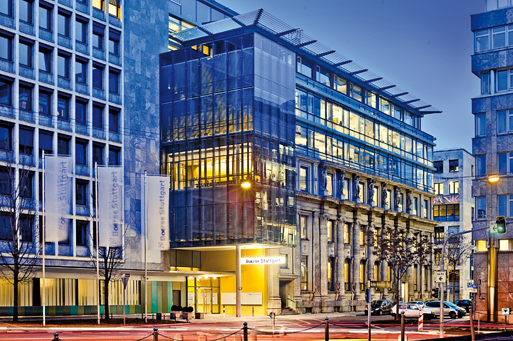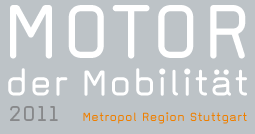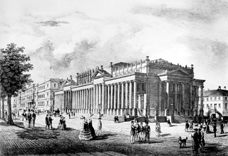150 years of Stuttgart Stock Exchange
It began as a regional commodities exchange
Back in 1853 Ferdinand von Steinbeis, president of the Commerce and Trade Centre, made an initially unsuccessful attempt to establish a stock exchange in Stuttgart. At that time Wuerttemberg had no financial infrastructure to accommodate the mounting capital derived from industrialisation.
Then in 1861 the time had come: The Stuttgart Stock Exchange Society was founded in the Koenigsbau, and the Stuttgart Stock Exchange opened its doors. In contrast to the commodities exchange started up in 1860, there was now a daily exchange with daily trading. The first official quotation list in 1881 contained 44 rates. Stock exchange sessions were always opened at 2 pm by ringing a bell, and they ended in the same way an hour later. Although women could be members of the Stock Exchange Society, until 1921 they had to be represented by men on the trading floor. In 1956 the Stuttgart Stock Exchange was still Germany’s only seated stock exchange, which simply means that all the traders sat in rows like in a classroom. Trading in stocks and bonds took place one after the other. After 1945, as the regional stock exchange, the Stuttgart Stock Exchange was a key mover of the economic miracle in Southwest Germany.
In 1997 Stuttgart was Germany’s first stock exchange to reduce the minimum order quantity to one share – in the interest of private investors.
The once regional stock exchange is today a global player. After Frankfurt it is Germany’s largest trading centre and one of Europe’s leading stock exchange organisations for private investors. In trading securitised derivatives, the Stuttgart Stock Exchange is regarded as market leader in Europe. Aside from leveraged and investment products, investors can also swiftly and reliably trade in shares, bonds, funds and bonus certificates. The Stuttgart Stock Exchange celebrated its 150th anniversary in 2011 and is well set up for the future. Its main customers remain SMEs and private investors, a market niche that has long proved its worth. A special feature in Stuttgart are the seminars for private investors in which you can inform yourself about individual financial products.
An interesting mix of banks, insurance companies and building societies
Stuttgart is one of Germany’s most important financial centres. In contrast to other successful financial centres it has, however, a moderate cost structure while providing good quality of life, an excellent infrastructure and an outstanding business environment at the same time.
Large building societies and insurance companies have their headquarters here, not to mention the largest and most profitable public regional bank and savings bank. The second-largest stock exchange is also sited in the state capital. In a national comparison, Stuttgart has the highest employee figures in the banking and insurance sectors.
Aside from corporate finance, the needs of private customers are one of the cornerstones of the regional finance industry. The idea of home ownership savings originated around a hundred years ago in Baden-Wuerttemberg. Today there are four major building societies in the region accounting for almost half of all home ownership savings nationwide.
As the market environment is constantly changing for the financial industry it must constantly adapt itself to new requirements, in particular from SMEs. There is an increasing demand for innovative financial tools and bespoke consultancy services. An annual highlight for the Stuttgart financial community is the “Invest”, Germany’s largest and most important trade fair for private and institutional investors.

Stuttgart Stock Exchange






 download .pdf
(310 KB)
download .pdf
(310 KB)